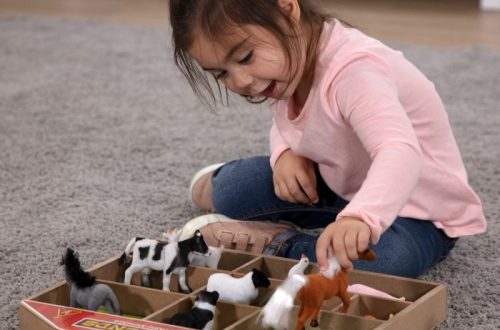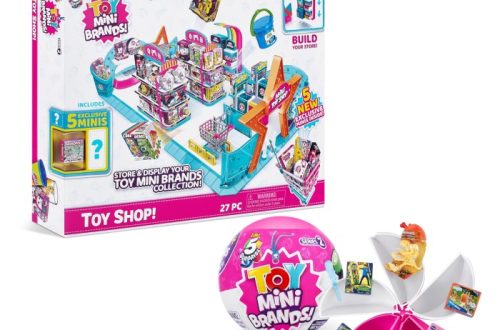The Inception of the Rubik’s Cube
The Rubik’s Cube found its beginnings in the hands of Erno Rubik, a Hungarian architect, in the spring of 1974. Initially, it served as a teaching aid for explaining three-dimensional geometry. Its inventor never premeditated the Rubik’s Cube would ignite a global frenzy. After crafting the prototype, Rubik spent a month deciphering the puzzle’s complex solution. He quickly recognized its potential beyond a mere educational tool; he saw a mass-market hit. Although it did not gain worldwide presence until 1980, the Rubik’s Cube’s journey from a simple teaching aid to a puzzle that challenges millions across the globe is truly remarkable. Its intuitive yet challenging design has captivated audiences for over four decades and continues to do so.
Erno Rubik’s initial struggle with his own creation underscores the cube’s intricate design. Being able to articulate the complexity in simpler terms was key to his realization that the cube could entertain and exercise the minds of people worldwide. This insight marked the inception of the Rubik’s Cube as not just a product, but a cultural phenomenon, paving the way for its eventual global sales and iconic status.
It is interesting to note how an object designed for educational purposes evolved into something far bigger than its intended use. The Rubik’s Cube serves as a testament that simple ideas, nurtured with vision and creativity, can transform into groundbreaking inventions, carving out their own space in history and popular culture.
Global Sales and Market Impact
Since its global launch in 1980, the Rubik’s Cube has seen remarkable sales success. By January 2009, a staggering 350 million units had found their way into homes around the world. Though more recent figures are not publicly available, it’s safe to speculate that this number has only grown. The cube’s impact extends beyond mere numbers; it has influenced market trends across various sectors.
The Rubik’s Cube phenomenon sparked an array of inspired products. Merchandisers recognized the cube’s iconic appeal. They began to create a multitude of cube-themed items. These range from puzzles to novelty gadgets—like a bedside lamp that doubles as a playable Rubik’s Cube. Such products mirror the cube’s mix of fun and intellect.
In retail, the cube’s influence is clear. Stores dedicate sections for brain games, often featuring the Rubik’s Cube. This focus on mental agility taps into the consumer’s desire for challenging yet enjoyable experiences. The cube’s presence in such retail spaces also emphasizes its enduring popularity.
The success of the Rubik’s Cube highlights how an engaging idea can have long-lasting market effects. It is more than a toy; it’s a staple of popular culture that continues to influence consumer behavior and product design decades after its release. The global sales and market impact of the Rubik’s Cube reflect its timeless appeal and versatility. It’s not just a puzzle—it’s a touchstone of creativity that resonates with generations.
The Rubik’s Cube as a Cultural Icon
The Rubik’s Cube, beyond a mere puzzle, has entrenched itself as a cultural icon. Its presence is ubiquitous, from movies and music videos to art exhibitions. Its patterned squares often symbolize the 1980s, a decade renowned for big ideas and bold colors. It stands as a symbol of intellectual challenge and creative problem-solving. People see the cube not just as a toy, but as a testament to human ingenuity.
The cube’s iconic status propelled it into a variety of disciplines. Mathematicians find it fascinating for its permutation possibilities. Artists draw inspiration from its geometric symmetry. Educators use it to explain concepts of spatial awareness and algorithmic thinking. The cube transcends age, language, and culture, making it universally relatable.
Erno Rubik’s invention also sparked worldwide competitions. Known as ‘speedcubing,’ these contests draw participants eager to prove their puzzle-solving prowess. The community around the Rubik’s Cube is passionate and welcoming, fostering an environment of camaraderie and shared challenge.
To encapsulate the cube’s global influence, look to its frequent appearances in pop culture. From ‘The Simpsons’ to ‘The Big Bang Theory,’ the Rubik’s Cube often shows up as a plot device or a character’s quirks. Unique art installations and even fashion accessories have embraced the cube’s vibrant colors and patterned complexity.
In essence, the Rubik’s Cube google doodle is a nod to the cube’s pervasive influence. It honors a puzzle that has, in forty years, become an unmistakable part of global culture.
Rubik’s Cube Inspired Products
The Rubik’s Cube has inspired a vast range of products. This reflects its deep influence on culture and consumer goods. The cube’s patterned design and interactive nature has caught the imagination of many. Its mix of fun and intellect has led to the creation of cube-themed items far beyond puzzles.
Diverse Merchandising
From toys to home decor, the Rubik’s Cube has sparked varied merchandise. Notable among these is a bedside lamp that functions like the cube itself. This innovative product blends practical use with the joy of problem-solving. Fans can enjoy the challenge by day and unwind by the lamp’s glow by night.
Novelty Gadgets and Apparel
The market also offers novelty gadgets shaped like the cube. Retailers sell cube-shaped clocks, speakers, and even kitchenware. Clothing and accessories feature its iconic colors and patterns as well. People worldwide wear t-shirts, ties, and socks showing off the cube’s design.
Games and Apps
Game developers have created digital versions of the cube for smartphones and computers. These apps help users learn to solve the puzzle or compete against others online. They offer hints and track solving speed, adding a modern twist to the classic cube.
Collectibles and Gift Items
Collectors can find limited edition cubes and customized versions for special occasions. These make unique gifts for puzzle enthusiasts and memorabilia collectors alike. They celebrate the Rubik’s Cube not only as a toy but as a memento of intellectual curiosity.
Educational Tools
The cube’s educational value has led to its adoption in classrooms and workshops. It serves as a hands-on tool for teaching spatial awareness and algorithmic thinking. These products underscore the Rubik’s Cube’s role in learning and cognitive development.
In conclusion, the Rubik’s Cube has set off a wave of inspired products. These range from practical to playful, from digital to wearable. The cube’s cross-sector influence showcases its status as a timeless icon. It continues to inspire innovators and brings joy to people of all ages.
Speedcubing Community and Records
The speedcubing community showcases solving Rubik’s Cube at impressive speeds. Participants from around the globe join to challenge, learn, and improve their skills together. This vibrant group not only competes but also shares strategies and fosters friendships.
Remarkable Records
Speedcubers often break new ground with astonishing records. Mats Valk from the Netherlands, for instance, solved a cube in just 5.55 seconds. This record, however, was surpassed by robots like CubeStormer 3, solving the cube in 3.253 seconds.
Community Events
The community holds regular events where speedcubers meet to compete and have fun. Events like the World Cube Association’s competitions gather the swift and sharp-minded. These gatherings are more than contests; they are where enthusiasts share in their passion for the cube.
Learning and Sharing
Newcomers to speedcubing can learn quickly, thanks to the community’s helpful nature. Seasoned solvers often share solving techniques online. This helps others improve their timing and deepen their understanding of the cube.
In sum, the speedcubing community and its records illustrate the cube’s ongoing appeal. It is a testament to both human skill and the cube’s lasting significance.
The Evolution of Cube-Solving: From Humans to Robots
The journey of cube-solving has seen remarkable evolution. What began as a human endeavor has now extended to the realm of robotics. The transition from humans to automated solvers demonstrates advancements in technology and a new frontier in how we engage with puzzles like the Rubik’s Cube.
From Speedcubers to Speedy Robots
Humans have always been at the heart of Rubik’s Cube solving. For years, enthusiasts, known as speedcubers, have honed their skills to achieve lightning-fast completion times. Mats Valk, a notable speedcuber, once held the world record by solving the cube in 5.55 seconds. His achievement stands as a milestone in human dexterity and cognitive agility.
Yet, technology has reshaped this landscape. Robots, engineered to perfection, are now capable of solving the cube in a fraction of the time. The CubeStormer 3, a robot built with a Samsung Galaxy S4 and LEGO parts, shattered previous records by solving the Rubik’s Cube in 3.253 seconds. This accomplishment unveils the sheer potential of robotics and their role in pushing the limits of what we thought possible.
The Implications of Robotic Solvers
The rise of robotic cube-solvers raises questions about the future of speedcubing. While robots can execute algorithms with unfathomable speed, human solvers bring creativity to the strategies they devise. It’s a blend of technology and human skill that continues to propel cube-solving forward. As robots become more sophisticated, they serve not only as competitors but also as tools that can aid in the training and development of human solvers.
Moreover, robotic achievements in cube-solving reflect broader technological advancements. They are an example of how far we have come in artificial intelligence and robotics. They also inspire innovation, encouraging us to imagine new applications of technology in various fields.
In summary, the evolution from human to robotic cube-solving underscores a remarkable period of innovation. It celebrates human achievement whilst embracing the future that robotics holds. As we continue to break boundaries, both human and robotic solvers play vital roles in the ongoing Rubik’s Cube legacy.
Celebrating Milestones with Interactive Google Doodles
Google Doodles have become a fun way to recognize significant events and milestones. Marking the 40th anniversary of the Rubik’s Cube, Google introduced an interactive doodle. This creation allowed users to play with a virtual Rubik’s Cube directly from their search page. Interactive Google Doodles like this engage a global audience, linking past achievements with modern technology.
The Rubik’s Cube Google Doodle serves several purposes. It educates people about the cube’s history and significance. It also offers a playful yet challenging task to solve the cube online. These doodles can generate a renewed interest in classic inventions, blending nostalgia with digital innovation.
The hallmark of such interactive doodles is their ability to draw in people of all ages. For some, it is a throwback to a beloved childhood toy. For others, it’s a fresh introduction to an iconic puzzle. Google Doodles transform a regular day online into an immersive experience. They connect users with a shared piece of cultural heritage.
Illuminating history through these interactive creations, Google makes learning fun. They showcase the widespread impact of ideas like the Rubik’s Cube. They also highlight the role of digital platforms in bridging generations. Google Doodles affirm that innovation continues long after the initial release of a product.
In conclusion, Google Doodles celebrate the Rubik’s Cube and other milestones with creativity. They provide a platform for collective remembrance and fun. By doing so, Google fosters a connection between technological advancements and cultural icons. This ensures these icons remain relevant in our digital age.
The Educational and Cognitive Benefits of Solving the Rubik’s Cube
The Rubik’s Cube offers more than entertainment. It is a powerful educational and cognitive tool. Its complex structure has a unique way of improving cognitive skills and enhancing learning.
Enhances Problem-Solving Skills
Solving a Rubik’s Cube requires critical thinking. It demands that solvers think logically and anticipate the consequences of their moves. Each twist improves one’s problem-solving abilities, teaching persistence and strategy.
Develops Spatial Intelligence
The cube also helps in developing spatial intelligence. As players maneuver the colorful squares, they get a better grasp of three-dimensional space. This skill is vital in fields like architecture and engineering.
Improves Memory and Concentration
Working through the cube’s possible permutations enhances memory. Frequent solvers recall algorithms and recognize patterns quicker. They also develop an increased concentration span during problem-solving.
Encourages Learning Algorithms
The Rubik’s Cube also involves learning various algorithms. This can foster a deeper interest in mathematics and computing, areas essential in our tech-driven world.
Promotes Patience and Perseverance
Finally, the Rubik’s Cube teaches patience and perseverance. It shows that complex challenges can be overcome through consistent effort. These attributes are beneficial both in academics and in life.
Rubik’s Cube is not just a popular toy. It has proven to be an educational asset that sharpens minds across ages. Engaging with the cube offers a playful means to boost mental capabilities and learn critical life-skills.





